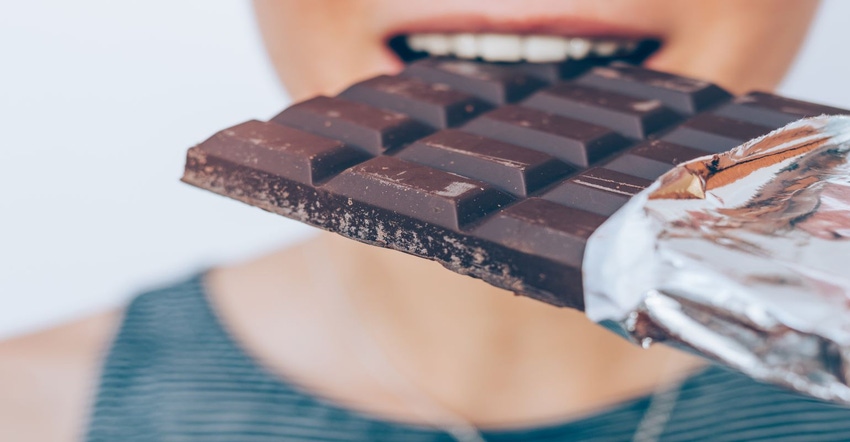Pandemic intensified consumer demand for chocolate
Demand for chocolate didn't go anywhere during the COVID-19 pandemic, but it may have changed how and why consumers seek it out.

The COVID-19 pandemic changed many things about the world and how today’s consumers interact with it, but one fact stayed true throughout the pandemic: People still love chocolate.
While the pandemic certainly resulted in increased attention being paid to personal health, it also took its toll on people; year-plus-long lockdowns and restrictions left people cut off from friends, family and the world as they knew it. Through it all, however, there was chocolate.
According to a recent Cargill study, consumers increasingly turned to chocolate during the pandemic for many different reasons. Based on Cargill’s findings, chocolate served as more than an indulgent treat; it became a lifeline of sorts for consumers. Results of the study showed “seven in ten (72%) [consumers] agree that chocolate lifts their mood, while 59% say it boosts their energy.” More than half of respondents (52%) also indicated chocolate “gets them through a tough day.” This love for chocolate—whatever the motivation behind it—also proved universal; the study showed less than 3% of American consumers actively avoid chocolate.
However, none of this is to say that all chocolate is created equal, and today’s consumers are seeking and expecting more from their sweet treats. The Cargill study showed consumers are demanding better chocolate—both for their own health and the well-being of those along the supply chain. For example, dark chocolate remains a consumer favorite because of its perceived health benefits; 52% of consumers choose it because they believe “it’s healthier” than milk or white chocolate.
In addition to gravitating toward chocolate they believe to be better for them, consumers are reviewing their purchases with increased scrutiny. According to the Cargill study, “Half of consumers consider dark chocolate a more premium choice; 71% notice when chocolate has a grainy, coarse texture; and nearly 1 in 4 shoppers perceive chocolate that denotes its cocoa bean origin country as higher quality.”
The study also revealed two opposing, but equally important, views on chocolate and experimentation. On the one hand, consumers are looking for new and interesting products, formats and flavor pairings, with 45% indicating they are “always looking” for new chocolate flavors and products. On the other hand, classic flavor pairings still reign supreme; the study found “Caramel and peanut butter topped the list [of flavor pairings] by a significant margin, with 60% of consumers selecting them in their top three. Behind these time-tested combinations, salty, mint, fruity and coffee/espresso flavors held similar sway—with no single option clearly rising to the top.”
Younger generations—specifically Gen Z and Gen Y—however, are driving demand for more novel flavors. For these groups, pairings such as spice, herbal and botanical notes all showed strong demand.
Food & Beverage Insider insights
The phrase “permissible indulgence” may be the pandemic’s lasting legacy on food and beverage. Dueling desires by consumers to lift their moods with food while also keeping close tabs on personal health (not to mention planetary sustainability) have given cause for consumers to want their cake and eat it (guilt-free) too.
Luckily, formulators and brands have heard the call and delivered. Chocolate can be found in all shapes, sizes, flavors and formats, allowing consumers to get exactly what they seek from their sweets. For those looking to cut down on sugar, chocolate sweetened with ingredients like monk fruit, stevia, allulose and erythritol can help cut some of the guilt out of chocolate consumption. For consumers looking to fortify their diets, sweets are available with added protein, vitamins, minerals or gut-health-focused pre- and probiotics. And for those who wish to indulge without having to ignore the less savory side of chocolate farming and production, brands across the world are placing increased emphasis on fairly traded, sustainably grown products that don’t put the planet or those who grow it at unnecessary risk.
Whatever one’s chocolate of choice, it’s clear the pandemic has led to a desire for this permissible indulgence. Consumers, nearly universally, love and seek out chocolate and were drawn to it during pandemic-driven times of stress and uncertainty. In 2021 and beyond, consumers truly can have their chocolate and eat it, too—all without the guilt.
About the Author(s)
You May Also Like






